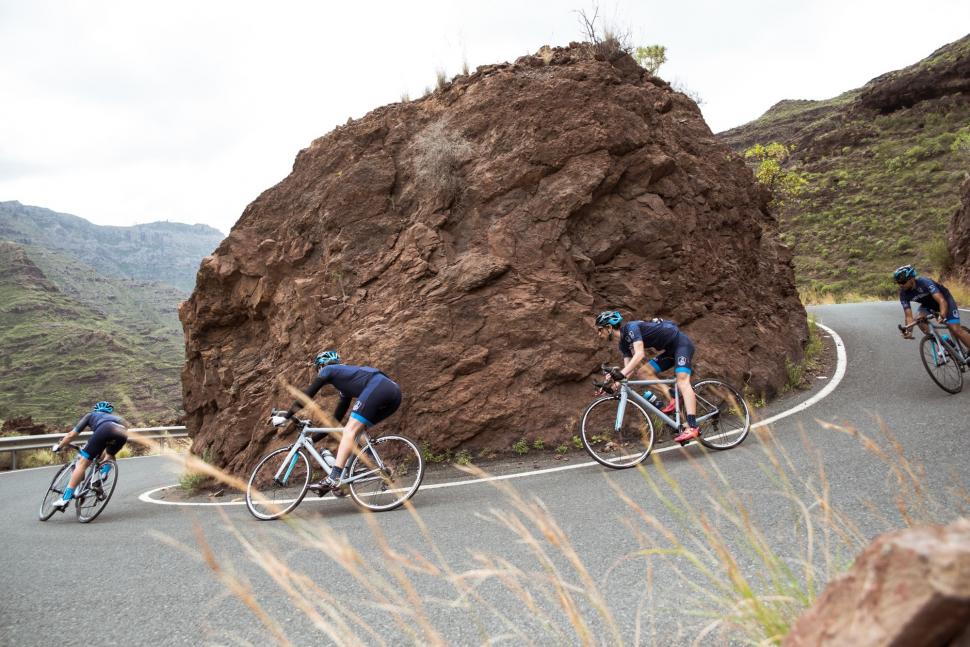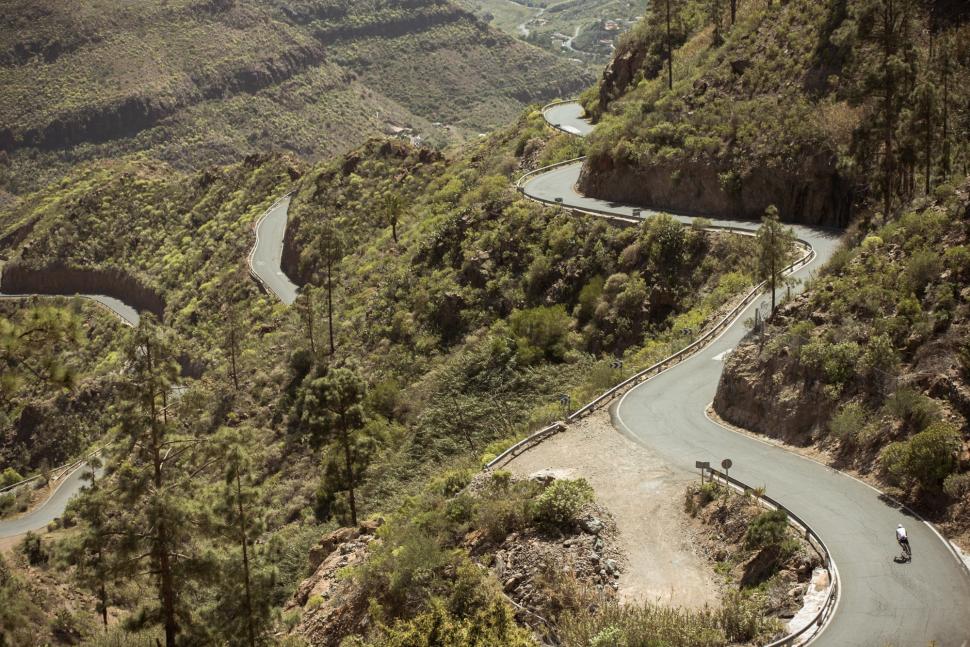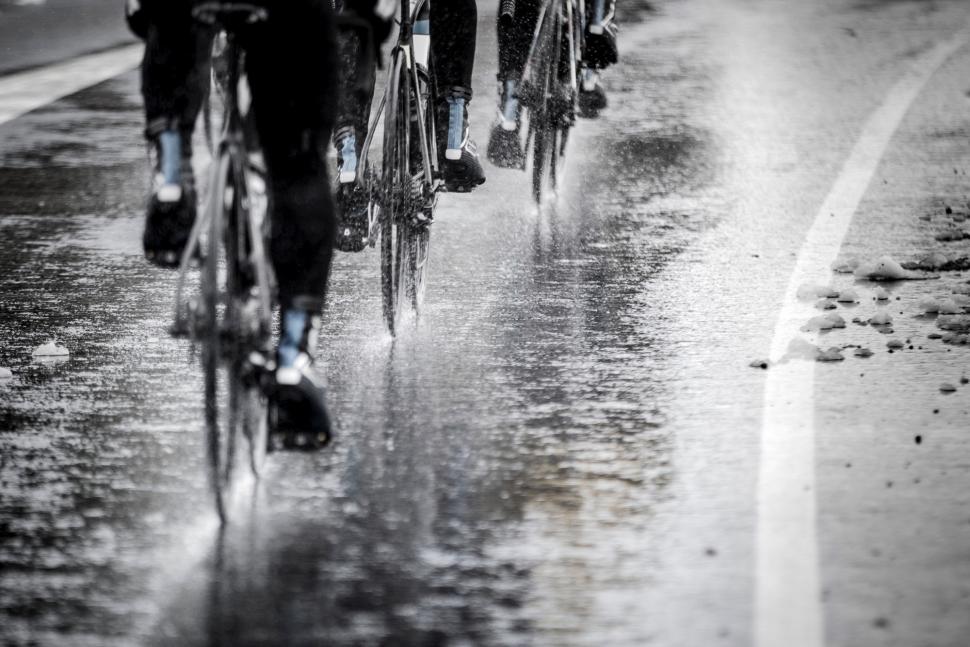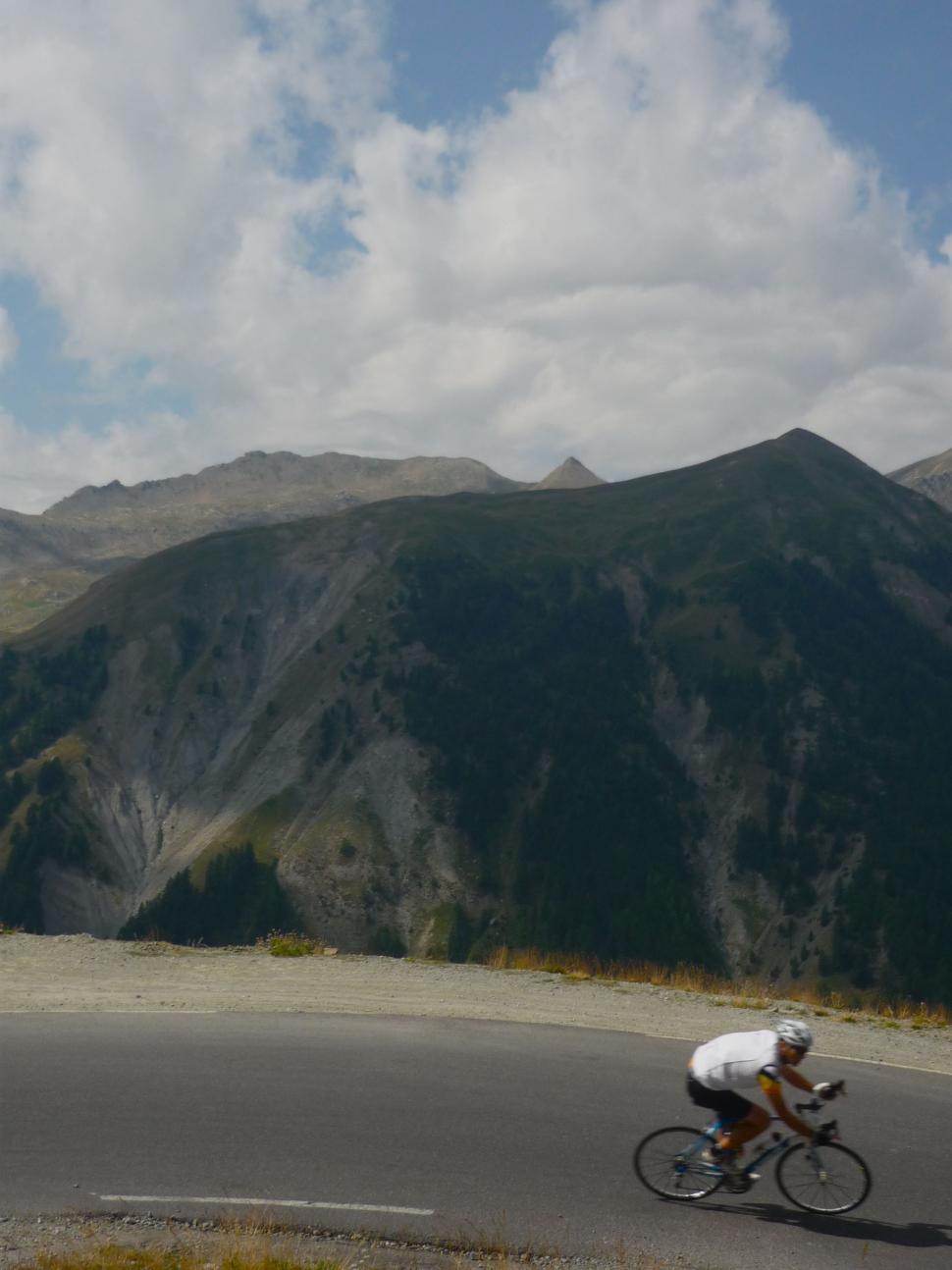- News
- Reviews
- Bikes
- Accessories
- Accessories - misc
- Computer mounts
- Bags
- Bar ends
- Bike bags & cases
- Bottle cages
- Bottles
- Cameras
- Car racks
- Child seats
- Computers
- Glasses
- GPS units
- Helmets
- Lights - front
- Lights - rear
- Lights - sets
- Locks
- Mirrors
- Mudguards
- Racks
- Pumps & CO2 inflators
- Puncture kits
- Reflectives
- Smart watches
- Stands and racks
- Trailers
- Clothing
- Components
- Bar tape & grips
- Bottom brackets
- Brake & gear cables
- Brake & STI levers
- Brake pads & spares
- Brakes
- Cassettes & freewheels
- Chains
- Chainsets & chainrings
- Derailleurs - front
- Derailleurs - rear
- Forks
- Gear levers & shifters
- Groupsets
- Handlebars & extensions
- Headsets
- Hubs
- Inner tubes
- Pedals
- Quick releases & skewers
- Saddles
- Seatposts
- Stems
- Wheels
- Tyres
- Health, fitness and nutrition
- Tools and workshop
- Miscellaneous
- Cross country mountain bikes
- Tubeless valves
- Buyers Guides
- Features
- Forum
- Recommends
- Podcast
feature
 14 tips for better descending August 2018
14 tips for better descending August 201814 expert tricks for better descending — get down safely and quickly
It pays to spend time developing your descending skills, not just to ride faster but to stay safe and in control. Here are our tips for getting your downhill riding dialled.
1. Get your brakes sorted
It’s a given that your bike should be roadworthy at all times, and that goes double if you’re going to practise your descending. Poorly maintained brakes and high speeds… you’re asking for trouble. Check your tyres are the right pressure too.
2. Look down the road
As you’ll usually be going fast when descending, look further down the road than normal. You don’t want to swerve or brake at the last moment to avoid hazards – that could be dangerous and will at least disturb your flow. Reacting as far in advance as possible will allow you to retain the highest level of control, so scan the road in the distance for obstacles, junctions, traffic, and anything else that could require you to take action.
3. Pick the right line
The best line isn’t always a constant distance from the verge. We’re not suggesting you career from one side of the road to the other, but as long as it’s safe to do so you can straighten and smooth your line by varying you position from the edge. Naturally, you need to be aware of other road users in order to ride safely.
Here's a video showing a rider taking up the full width of the road while cornering on a descent in order to carry through as much speed as possible. This is only possible if the road is closed or you are 100% sure that there's nothing coming in the opposite direction. Seriously, don't take any chances.
4. Get down on the drops
Positioning your hands on the drops gives you a secure grip, provides the best access to your brake levers, and allows you to get your upper body low when you want to pick up speed. It makes you more aero and lowers your centre of gravity for higher stability. As ever, keep your elbows bent to help absorb shocks from the road.
5. Cover your brakes
Have each of your index fingers (or your first two fingers, if that’s how you brake) poised over your brake levers, just in case you need to scrub off some speed in a hurry. That way you’re ready to react instantly to any hazards that come your way.
6. Don’t drag your brakes
Resist the temptation to come down a long descent with your brakes gently applied throughout. You’re better off laying off your brakes and then applying them firmly, but not jerkily, when you really need to decelerate.
Check out our tips for better climbing here.
7. Use your upper body as an air brake
You can use your upper body to help regulate speed. You might be surprised at just how much extra air resistance you can add by sitting more upright at 40mph. When you hit the straights and want to accelerate, lower your upper body parallel to the ground again.
8. Sort your crank position
Keep your cranks in the 3 o’clock/ 9 o’clock position when you’re riding in a straight line and not pedalling. You might want to raise yourself very slightly out of the saddle too, using your knees to make sure that bumps in the road don’t send you skyward when you’re moving fast. Move your outer pedal to the 6 o’clock position and push your weight onto it when cornering. This gives you the maximum clearance and control.
9. Lean!
Leaning your bike into a turn while keeping your body upright will help you get around. You might be surprised at just how far you can lean without losing traction, although you need to be more careful on wet roads.
10. Ride to the conditions
Descend more slowly in wet conditions when your braking distance will be greater and you’ll have less grip on the corners. You should also back off more on muddy or gravelly descents. Descending safely is always more important than descending fast.
11. Relax!
Try to stay calm and relaxed. Keep your upper body loose and think ahead. If riding downhill fast makes you nervous, take it at a comfortable speed and gradually get faster as your confidence increases. You don’t have to rag it on the descents just because other people do.
12. Don’t panic
If you do encounter a hazard unexpectedly, don’t panic and grab a big handful of brake. Slamming on the brakes will throw your weight forward, and that’s often not helpful. If there’s a big patch of gravel that you didn’t seen in the road, for example, the chances are that you can ride through it by keeping the bike as straight and upright as possible. If a pothole appears in front of you, perhaps you can steer around it or bunnyhop it. The important thing is to think clearly to make the best decision.
13. Follow an expert
If you know someone who’s a good descender, try sitting behind them when riding downhill and copying what they do. Take notice of their body position, the line they take and when they brake. Give them a little space so that you get a good view and plenty of time to react.
14. Practise!
Find a challenging descent and ride it several times. Think about how you could do things better each time you ride back up to the start. Perhaps you could pick a better line, lean more in a particular section or lay off the brakes a little longer. Put those improvements into practice when you ride it again. Carry on riding the same bit of road until you’ve got it nailed.
Do you have descending tips of your own? Please share them with us below.
Mat has been in cycling media since 1996, on titles including BikeRadar, Total Bike, Total Mountain Bike, What Mountain Bike and Mountain Biking UK, and he has been editor of 220 Triathlon and Cycling Plus. Mat has been road.cc technical editor for over a decade, testing bikes, fettling the latest kit, and trying out the most up-to-the-minute clothing. He has won his category in Ironman UK 70.3 and finished on the podium in both marathons he has run. Mat is a Cambridge graduate who did a post-grad in magazine journalism, and he is a winner of the Cycling Media Award for Specialist Online Writer. Now over 50, he's riding road and gravel bikes most days for fun and fitness rather than training for competitions.
Latest Comments
- hawkinspeter 1 sec ago
I like the idea, but I very rarely get the bus - maybe two or three times a year. I'll probably give my £100 bus tickets to a friend if they're...
- OldRidgeback 19 min 49 sec ago
LOL - I remember Muirhouse int he bad old days - the worst toilet in Scotland.
- Secret_squirrel 21 min 25 sec ago
Um...£300, and its not fully waterproof, and poorly sized? Why on earth does this deserve 8/10?
- Secret_squirrel 25 min 41 sec ago
Please road.cc can we stop publishing this bullshit uncritically, as just clickbait? Also perhaps show an actual photo so we can make up our own...
- Rendel Harris 1 hour 17 min ago
Imagining this spoken in the voice of Peter Cook's E.L.Wisty ("No I didn't know I'm the most boring man you've ever met, that really is most...
- bobbinogs 1 hour 46 min ago
Well I'm afraid it's not going well. I used the camera yesterday on roads that were predominantly dry but with the odd wet stretch. The weather...
- ktache 9 hours 31 min ago
Nokons on two of mine, longitudinal XTR on the other.
- wtjs 9 hours 59 min ago
Excellent, Lancashire Road Police! I and many others are pleased that some Police Services are stressing this point. Language is important:...
- mctrials23 11 hours 22 min ago
This is exactly the sort of thing AI enables them to do. Previously it was thought impossible to do something like "if user is travelling for 3...
- archieboy 11 hours 44 min ago
No, just to expensive, I went Jonas and Demi as the expensive picks....







Add new comment
14 comments
Plenty of tips from motorbikes, best is to look where you want to go ( through the bend), not where you think you are going (in to the verge). Also, watching the kerb lines down the road, if they are converging, the bend is tightening and you may be going too fast, if they are diverging, go as fast as you like, then there is counter steering if you are in trouble.
I realise I'm replying to an old comment, but if JMark is still around I'd be very interested in hearing more about this diverging kerb lines thing - it sounds really interesting but a cursory interwebs search hasn't been very forthcoming!
Always ride within yourself, to your ability. Do not try and descend with someone who is faster than you're comfortable with. You will crash and potentially seriously injure yourself. Better to get to the bottom than leave patches of skin all over the road.
No mention of shouting "WHEEEEEEEEEEEEEEEEEEEEEEEEEEEEEE"
That's important.
Get your weight forward. Resist the temptation to slide backwards. The more weight you have on the front of the bike the more stable it will be. This is why lifting your bum and getting on the drops is so important.
Sorry, but that really is not a good way to go down hill, particularly not going round corners, as the more weight on the front wheel' the more difficult it is to adjust your line in a corner, and also the extra weight acts against the castor angle changing the angle of the front of the bike freely. Weight largely on your feet, agreed lightening the load on your saddle some, but keep your weight evenly distributed on the bike, just as on the flat. If you think your bike gets more stable with more weight on the front, try leaning all your weight on the handlebars, it becomes very unstable. If you put all your weight over the back wheel you will get the wheel wobbles (for the same reason an unloaded shopping trolley wheel vibrates backa dn forwards so annoyingly.) Even weight distribution, with less on the handlebars as you go round a corner.
Why is this in the news feed? Its dated today but the content looks exactly as it is when I read it before. And all the comments are 5 months old. THis is the second time in 2 days I've noticed old articles appear to be published again with old comments and no idea what ir anything has been changed.
It's road.cc
Murphy's Law of cycling : the pothole will always be right on the perfect line
..and you will hit it if you look at it.
From a very fast descender....
Do not try to lean your bike more than your body . It is pointless. The 2 things that matter are your body centre of gravity and your contact point on the road. If these aren't matched with your angular momentum / angle of lean you will fall off. Angle of bike compared to body is irrelevant. (see nibali's photo, dead in line with his bike, as nearly all pros will be). The tyres are (or should be ) round in profile so have the same amount of contact regardless of bike angle.
There is very little in common between motor bikes and bicycles cornering under stress. Partly due to weight disparity but also motorbikes are able to apply power during the corner, bikes aren't (hence all the criticism from pro motor bikers about the line cyclists take)
Hanging your knee out may feel good, but it actually reduces your stability (and hence ability to stick to a line) as it alters the position of your centre of gravity around the contact point with the road.
Enter a corner with your weight on your saddle and then press down through your outside heel, (increasing the weight on the leg, decreasing the weight on the heel) look toward the apex and then use your weight on the INSIDE handlebar to make find adjustments to your line through the corner. If you want to feel what a difference this makes, go around a street corner fast and put your weight through your heel at 6 oclock. you will 'carve' the corner.
Brake before the corner. Use your brakes to maintain speed through the corner on steep hills if necessary, otherwise release brakes before the corner. Putting your weight over the front wheel (via braking) effectively alters the steering of the bike making it more likely to run wide (see Sheldon Brown for a technical description.
haha @Duncann our posts crossed! I was busy re-watching that clip. Masterclass!
..also on 'pointing your knee out does nothing' - suggest you check out Nibali's 2015 winning descent in Il Lombadia, plenty of knees and elbows out - suspect had he not done so he would have come a cropper in several of the tighter bends at those speeds
- suspect had he not done so he would have come a cropper in several of the tighter bends at those speeds
Ok, so none of us are Nibali, but I think if you're really going for it and prepared to lean the bike over, then there's a definite benefit to that technique.
It's a habit from when he (and most others) was much younger, he'd get round just fine without doing it, in fact better by not sticking his knees out. However like many things that are ingrained it's mental, he and likely most people would struggle to not do it and thus they'd lose confidence and not be able to change. It's not wrong, just needless.
The last time I was under 80kg I was about 14/15, I'd already had a racing bike for 2 years (even in the early/mid 80s cycling was still quite popular where I lived), I've been going around corners fairly successfully and reasonably fast without sticking my knee out for best part of 30 years, even at my peak rugby weight of 107kg I would focus on leaning body and bike as needed and keeping the inside knee in, I do it on my commute and all the other bikes I've had including the downhill MTB BITD. I read about it many years ago with regards the fallacy of sticking your knee out for cornering and I've stuck with it since
It might feel odd but it's effective as far as I'm concerned, that said there are more important aspects to cornering smoothly/as fast as possible than sticking your knee out that's for sure, it's a tiny part whether you stick your knee out or not.
Oh and that photo of Nibs shows he's clearly not cornering as well as he could be, he/bike are almost bolt upright by comparison to some, so either it's not a tight corner - in which case why has he got his kneee out so far, or he's not leaned into the corner enough which says to me that on this particular corner he's going to be slower in AND thus slower out than if he had.
Maybe that's deliberate as there are slower riders in front and/or he's not trying hard at that juncture (for whatever reason).
And as for the hoods/drops debate, well I've ridden at 55mph on the hoods so whatever floats your boat, I've ridden multiple tight chicanes one after the other in the alps this way, very hard braking on ceramic wheels but still manageable from the hoods. You can lock wheels up from the hoods and it again cmes down to your ability to judge the amount of distance you need to get around safely and how much braking you can do to stay just within the limit of your tyres traction.
Oh and shifting your weight backwards under very heavy braking because the last thing you want is a front wheel lock up due to panic braking 9which you still see in the pro ranks every season) and the rear not being very effective at all cos your weight has shifted massively forward. Shifting your weight off the back of the saddle can make enough of a difference to being dead or not, so you should preferably not be on the ragged edge, it's not worth it just so you can brag to your mates on the next cake stop!